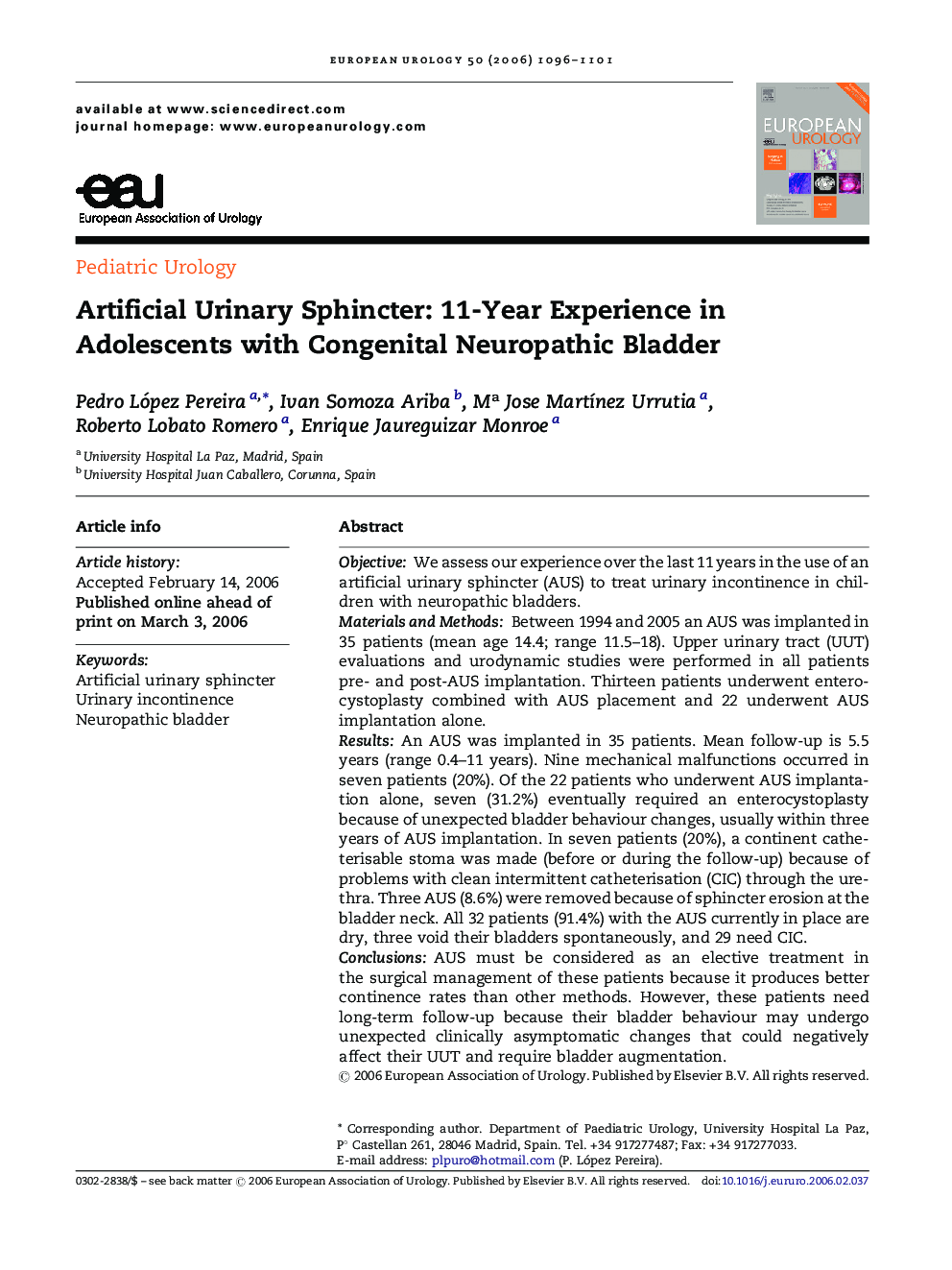| Article ID | Journal | Published Year | Pages | File Type |
|---|---|---|---|---|
| 3930079 | European Urology | 2006 | 6 Pages |
ObjectiveWe assess our experience over the last 11 years in the use of an artificial urinary sphincter (AUS) to treat urinary incontinence in children with neuropathic bladders.Materials and MethodsBetween 1994 and 2005 an AUS was implanted in 35 patients (mean age 14.4; range 11.5–18). Upper urinary tract (UUT) evaluations and urodynamic studies were performed in all patients pre- and post-AUS implantation. Thirteen patients underwent enterocystoplasty combined with AUS placement and 22 underwent AUS implantation alone.ResultsAn AUS was implanted in 35 patients. Mean follow-up is 5.5 years (range 0.4–11 years). Nine mechanical malfunctions occurred in seven patients (20%). Of the 22 patients who underwent AUS implantation alone, seven (31.2%) eventually required an enterocystoplasty because of unexpected bladder behaviour changes, usually within three years of AUS implantation. In seven patients (20%), a continent catheterisable stoma was made (before or during the follow-up) because of problems with clean intermittent catheterisation (CIC) through the urethra. Three AUS (8.6%) were removed because of sphincter erosion at the bladder neck. All 32 patients (91.4%) with the AUS currently in place are dry, three void their bladders spontaneously, and 29 need CIC.ConclusionsAUS must be considered as an elective treatment in the surgical management of these patients because it produces better continence rates than other methods. However, these patients need long-term follow-up because their bladder behaviour may undergo unexpected clinically asymptomatic changes that could negatively affect their UUT and require bladder augmentation.
